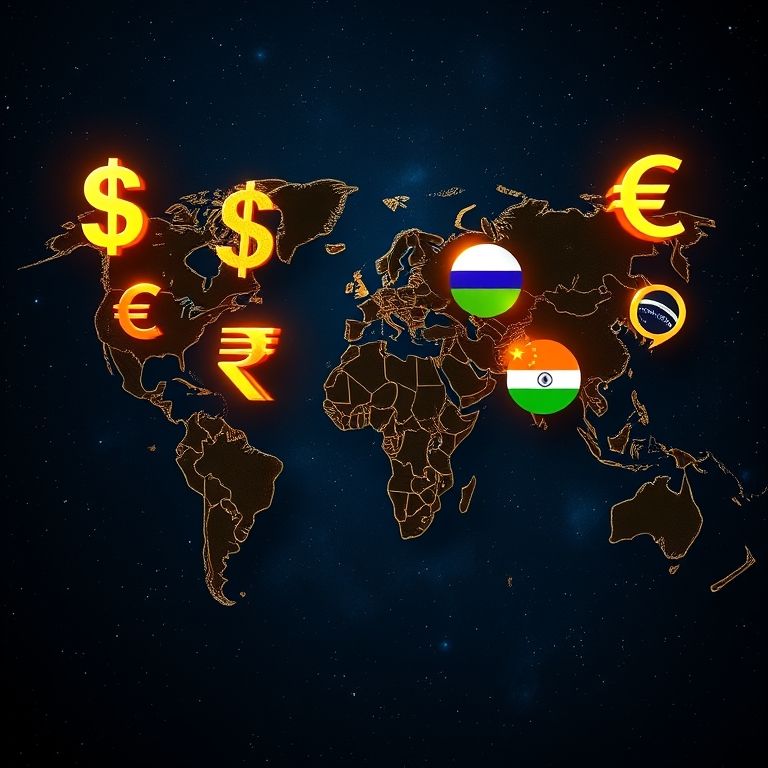What does the money symbol mean in different countries?
What Does the Money Symbol Mean in Different Countries? A Practical Guide for Traders
Introduction
Money symbols are more than pretty icons next to a price. They carry history, signaling conventions that traders rely on daily. From forex quotes to crypto tickers, understanding what each symbol stands for—and how it’s used in pricing—helps you read markets across borders. This piece walks through the meaning behind key currency symbols, how they affect multi-asset trading (forex, stock, crypto, indices, options, commodities), and what that means for prop trading, DeFi, and the next wave of AI-driven finance. Remember: reading the symbol is step one toward reading the market.

THE SYMBOLS AND THEIR STORIES
- $ dollar sign: A survivor of history—the spillover of the Spanish peso and later U.S. pricing culture. It’s the most recognizable price cue worldwide, often used as the base currency in many quotes, especially in commodities and cross-border invoicing.
- € euro sign: A stylized “E” and “C” locked in a single arc, symbolizing European integration. In trading, it flags euros as the base or quoted currency in countless pairings and derivative contracts across Europe and beyond.
- £ pound sign: Originating from the old libra, it signals sterling’s long-standing role in global finance, especially in UK-focused equities, futures, and options, where liquidity often sits at the heart of spreads.
- ¥ yen sign: A single, clean mark for Japan’s currency, but in practice you’ll see it in broader Asia-focused liquidity pools and in cross pairs like USD/JPY where the yen acts as a catalyst for carry trade dynamics.
- ₹ rupee sign: A newer symbol, born from an initiative to give the Indian currency its own graphic identity. It’s a reminder of India’s growing FX and equites influence for global traders.
- ₽ ruble sign: Russia’s symbol reflects a currency with geopolitical and macro vulnerabilities that can ripple through commodity markets and risk sentiment.
- ₩ won sign: Korea’s mark, crucial for traders tracking regional tech cycles and semiconductor supply chains.
- ₿ Bitcoin: The crypto symbol that travels beyond any single country, signaling a decentralized asset class that defies traditional borders even as it interacts with fiat currencies.
TRADING IMPLICATIONS: WHY SYMBOLS MATTER
- Quote conventions and base/quote clarity: A currency symbol helps you parse whether a price is USD-based, EUR-based, or something else. In multi-asset desks, misreading a base/quote duo can cost you more than a few pips.
- Cross-asset correlations: When USD strengthens (a dollar symbol acts as reference), forex pairs, indices, and commodities often move in tandem with the greenback’s mood, affecting risk-on/risk-off dynamics across stocks, crypto, and futures.
- Platform quirks and display: Different trading platforms render symbols differently (especially crypto vs. fiat). A solid habit is to confirm the base and quote in the instrument’s contract spec before sizing.
PRO P TRADING AND MULTI-ASSET STRATEGIES
- Diversified triggers: FX liquidity anchors carryover into indices and commodities. A carry trade in USD pairs can partner with stock or commodity exposures to balance risk.
- Risk controls across assets: Use uniform position sizing, margin management, and stop strategies that respect the most volatile symbol in your portfolio to contain drawdowns.
- Real-world example: In times of USD volatility, crypto correlations can flip quickly; agile traders hedge with options and diversify across assets to smooth equity curves.
DEFI, DECENTERED FINANCE, AND CHALLENGES
- DeFi acceleration: Stablecoins and cross-chain bridges push liquidity into decentralized venues, challenging traditional pricing signals but offering new tick data for strategy testing.
- Key risks: smart contract bugs, rug pulls, and regulatory shifts can erase liquidity and disrupt price discovery. The best practice is to pair on-chain signals with robust off-chain risk checks.
FUTURE TRENDS: SMART CONTRACTS, AI-DRIVEN TRADING, AND PROP GROWTH
- Smart contracts automate execution and settlement, reducing friction across forex, stocks, and crypto. Still, audits and governance matter to curb exploits.
- AI-driven trading: Machine learning and real-time analytics sharpen entry/exit signals, but require strong risk controls and transparent evaluation metrics.
- Prop trading outlook: Capital continues flowing toward skilled operators who manage cross-asset risk, leverage responsibly, and stay fluent in global symbol evolution.
Practical takeaways
- Know the base and the quote for every symbol you trade; a quick refresher saves pricey mistakes.
- Check liquidity, spreads, and settlement venues for each asset class; volatility witness in one symbol can ripple into others.
- Build a diversified toolkit: use FX, stock, crypto, indices, options, and commodities to weather regime shifts.
- Embrace DeFi as a laboratory but stay cautious with smart contracts risk and regulatory footprints.
Slogans
- Money speaks in many tongues—learn the symbol, master the market.
- Decode the symbol, unleash the chart.
If you’re building a platform, add a quick symbol glossary and live cross-asset risk analytics. The world of money signs is the first layer of a global map—and every trader deserves a clear compass.
YOU MAY ALSO LIKE




